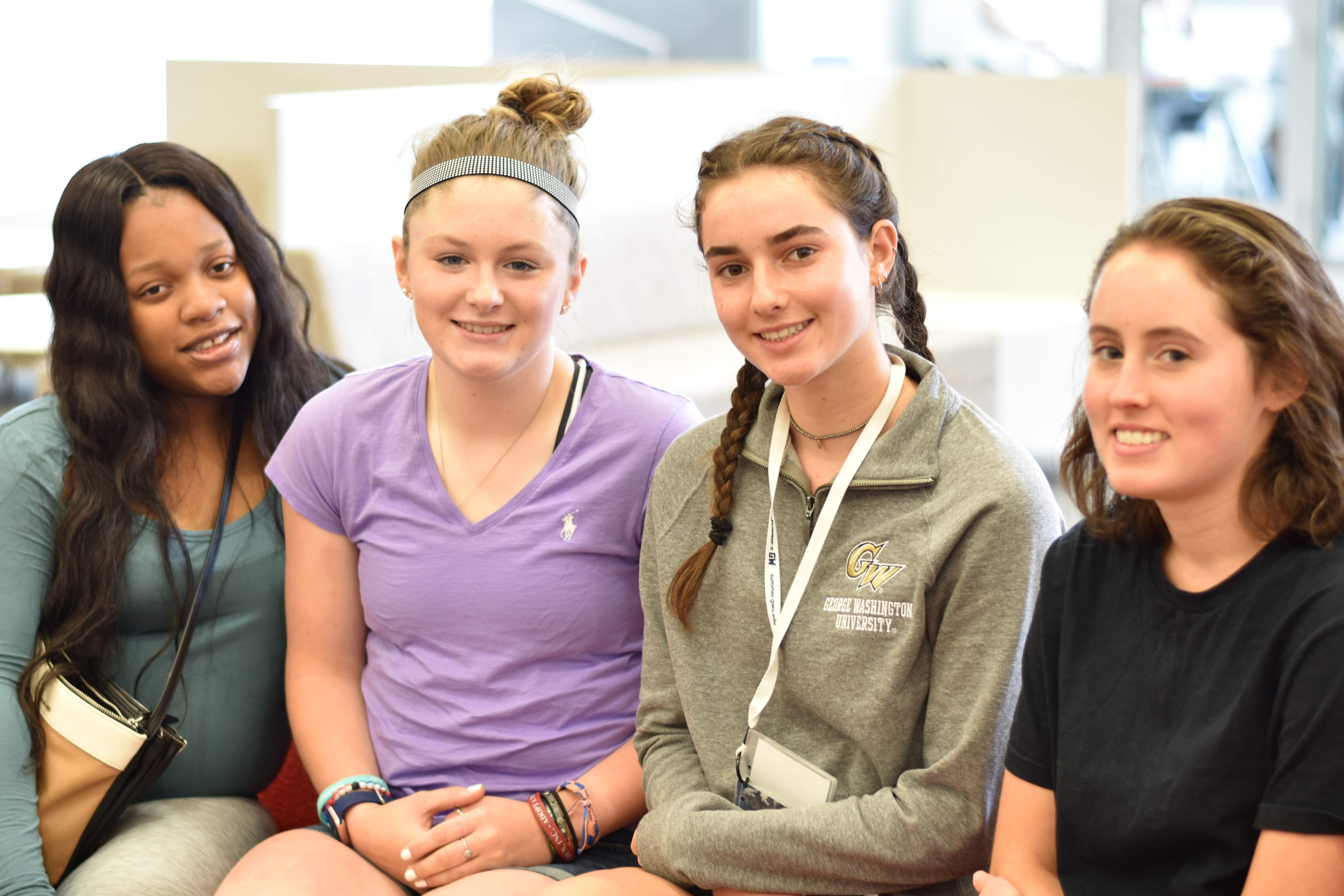From a cyber security camp to pre-college summer classes, departments across the George Washington University are making an effort to sustain girls’ interest in STEM fields starting when they are in high and even middle school.
Boosting girls’ confidence and education levels in STEM fields early is crucial, said Rachelle Heller, professor of computer science at the School of Engineering and Applied Sciences and director of this summer’s Middle School Girls Cyber Camp.
“It’s very fitting that GW should take a leadership role” in girls’ STEM education, said Dr. Heller, former director of the Elizabeth J. Somers Women's Leadership Program, who has herself been named among 100 “inspiring women in STEM.”
Some of that leadership was on display in the GW pre-college program, which welcomed high school students to campus this summer. In the August session of Professor Jason Zara’s biomedical engineering class for high school students this year, about half the students were girls—and that, he said, was one of the lowest ratios in his experience running the course.
“This class is a bit of an aberration—we’re usually majority female,” said Dr. Zara, associate chair for academic affairs at the School of Engineering and Applied Science.
Emily Makedon, a rising high school junior from Scarsdale, N.Y., said there was plenty of interest in STEM among her peers. “There’s a majority of boys in robotics, maybe, but it feels like there are lots of girls exploring other areas of engineering.”
In Dr. Zara’s class, Ms. Makedon and her colleagues delved into topics including electrophysiology, medical imaging and computer-aided diagnosis. Despite the short three-week timeline, the class was intensely hands-on. Student Pierra Hester, who grew up in the western suburbs of Chicago, said her favorite project was building a tower out of index cards that had to support a heavy rock. Jacqui Hayes, from Saratoga Springs, N.Y., especially enjoyed building a prosthetic hand out of paper clips, paper and string.
“In biomedical engineering you can help people just the way a doctor does, but minus the blood,” Ms. Makedon said.
The Middle School Girls’ Cyber Camp, which ran for a week in June, was open to girls entering 7th and 8th grades and funded by the National Security Agency and the National Science Foundation. Participants learned practical skills, but also engaged indirectly with STEM via recreational trips to the NSA’s National Cryptologic Museum and the International Spy Museum.
“The camp not only increased the pipeline of potential students to study computer science and other STEM topics but also provided young girls with the skills to engage in ‘cyber-hygiene’ and secure their personal and family computers,” Dr. Heller said.
GW also partners with and hosts the annual Siemens Competition in Math, Science and Technology at which high school students—male and female—vie for a total of $500,000 in college scholarships.
“It is critical that we continue to get more girls interested in STEM, particularly as STEM careers grow faster than in any other sector of our economy,” said Judy Marks, CEO of Siemens USA and chair of the Siemens Foundation. “Our foundation’s programs aim to close the STEM opportunity gap. And as hosts of the Siemens Competition, the nation’s premier science research competition for young people, we also are increasing our outreach to young women and minorities to make the dream of winning it available to more young people.”
Isabel Verghese, a rising senior in SEAS, was Dr. Zara’s class assistant in the summer biomedical engineering class. For her, a high percentage of female classmates and colleagues hasn’t been a given.
“In high school, I took AP calculus as a junior, and I was the only junior girl,” she said. “And in my AP physics class senior year, we had about 25 students and five girls.”
But at GW, she’s found greater parity and support from peers of all genders.
“We all support each other, girls and guys,” she said. “We do work together, we study for tests together. It’s very collaborative, which is part of the reason I’m glad I came to GW for engineering.”


